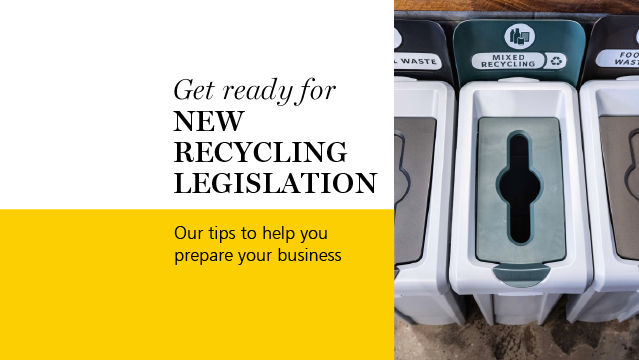
How to prepare for recycling legislation
With new 'Simpler Recycling' legislation in England just around the corner (31st March 2025), plus a whole host of benefits of better recycling your business could be missing out on, now is the time to implement an efficient recycling system.
But with multiple areas collecting different types of waste, new streams to implement, and internal teams to engage and educate, it can prove a challenge to know where to start.
Start by understanding your venue’s waste flow and the stakeholder responsibility at each stage. It’s likely that you’ll have a waste contractor in place already, however they’ll only handle your waste once they’ve collected it from your venue.
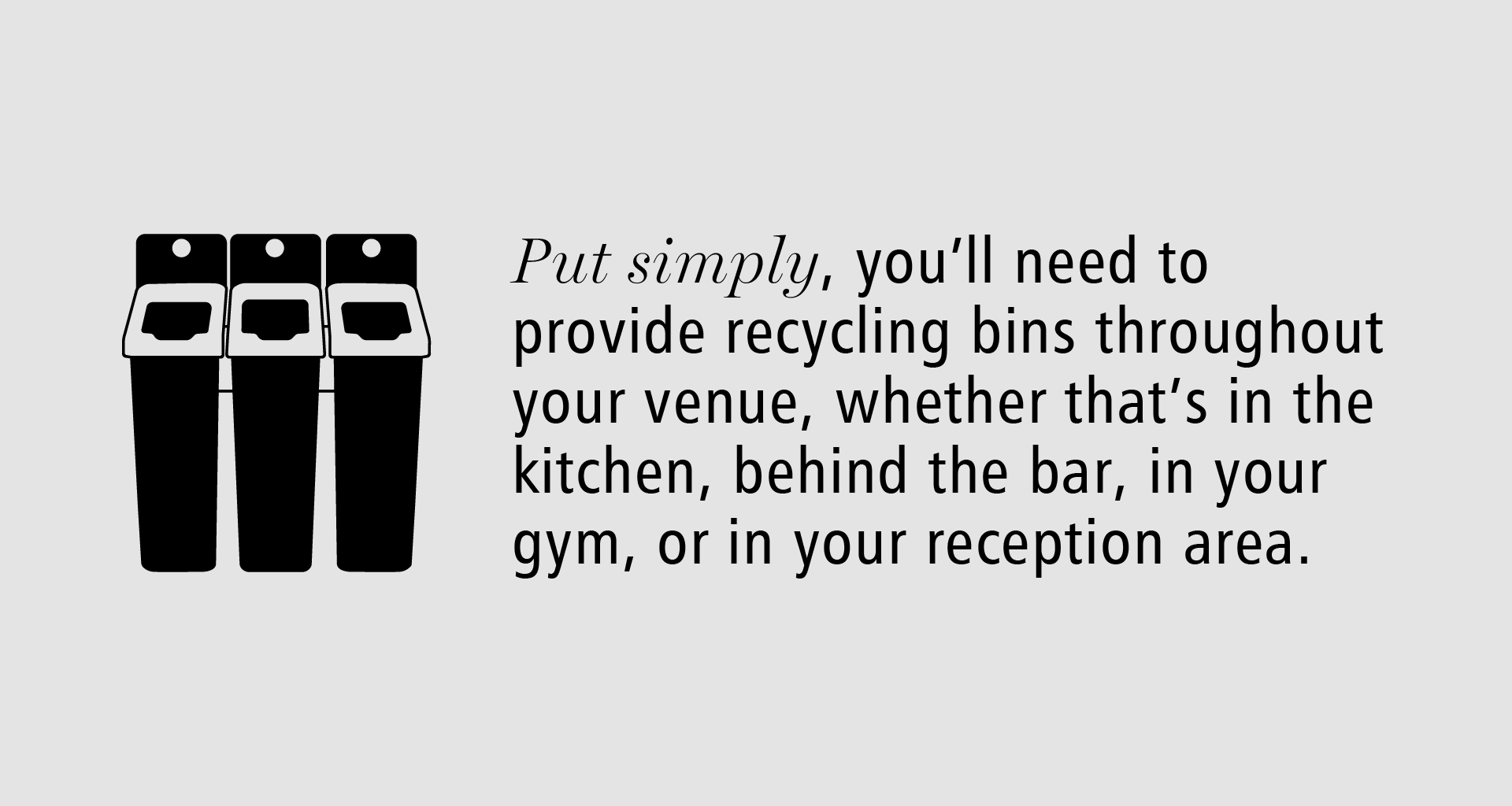
The waste management flow is a five-step process:
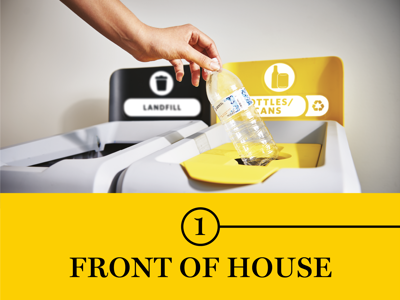
Staff or customer deposits waste
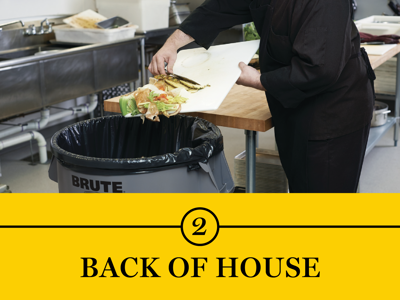
Staff deposit waste in the correct bin
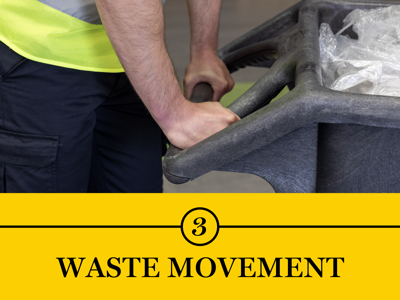
Waste from front and back of house is moved to collection points
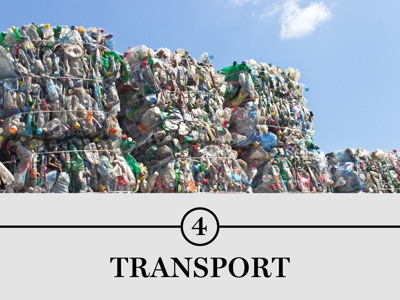
Collected waste is transported by the contractor to a treatment facility
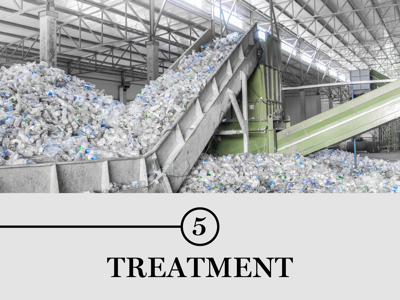
Received waste is processed and either recycled or dumped
A step-by-step guide to transforming your recycling
Take stock of your venue’s current waste management system, identify any areas where recyclable waste is being generated but not collected separately, and implement simple changes in the right places.

Staff or customer deposits waste

Staff deposit waste in the correct bin

Waste from front and back of house is moved to collection points

Collected waste is transported by the contractor to a treatment facility

Received waste is processed and either recycled or dumped
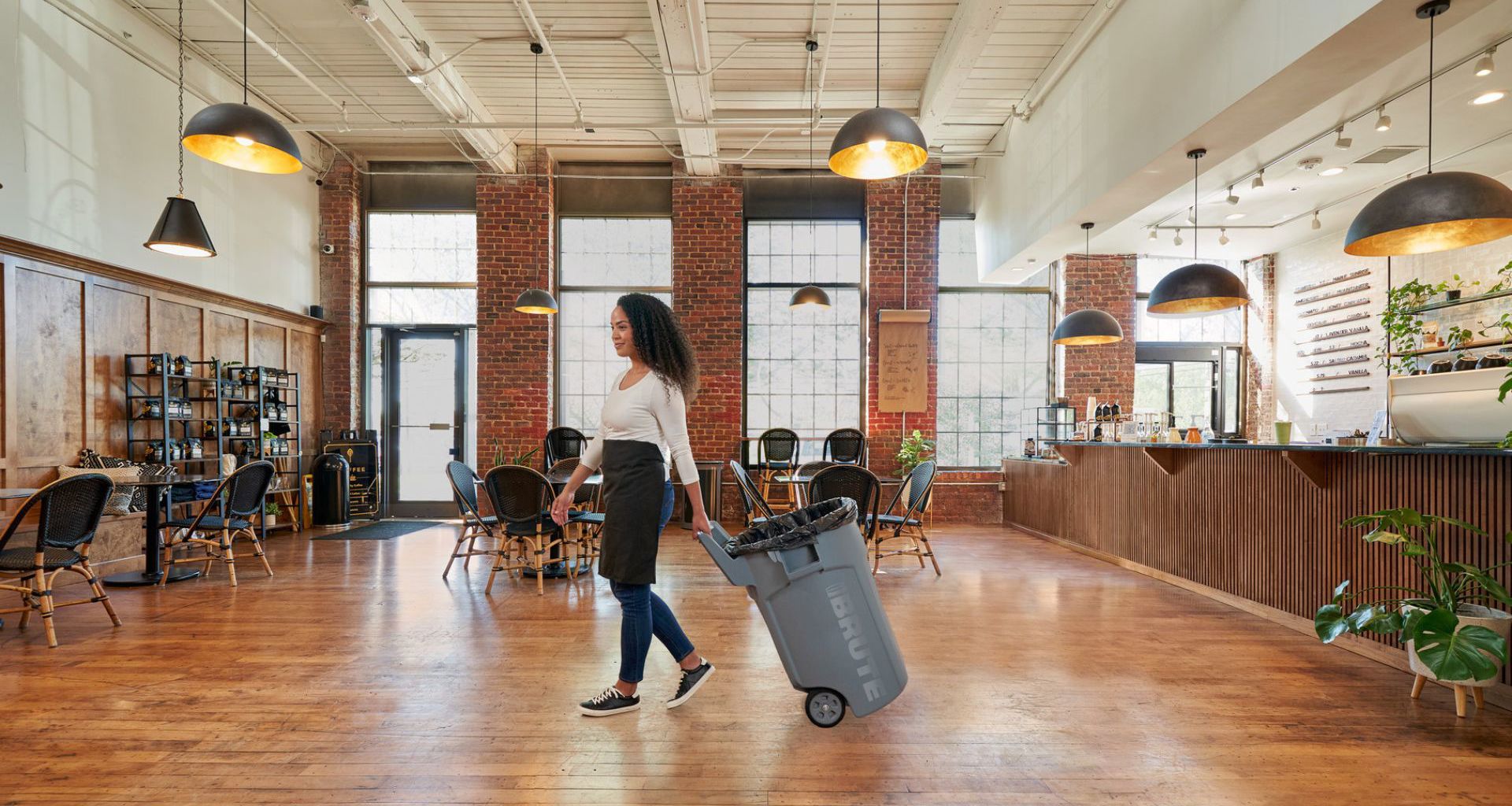
From your lobby to your kitchens, conference rooms, offices and gyms, get started with our easy-to-follow guide to conducting a ‘waste walk’ at your venue. Assess the needs of each area and identify changes you need to make to ensure your business is compliant with the new legislation.